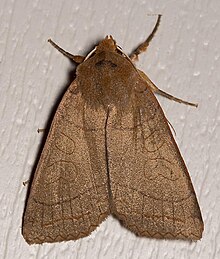
Viburnum is a genus of about 150–175 species of flowering plants in the moschatel family, Adoxaceae. Its current classification is based on molecular phylogeny. It was previously included in the honeysuckle family Caprifoliaceae.

Viburnum lentago, the nannyberry, sheepberry, or sweet viburnum, is a species of Viburnum native to North America.

The willow flute, also known as sallow flute, is a Nordic folk flute, or whistle, consisting of a simple tube with a transverse fipple mouthpiece and no finger holes. The mouthpiece is typically constructed by inserting a grooved plug into one end of the tube, and cutting an edged opening in the tube a short distance away from the plug.

The Southeast Missouri Lead District, commonly called the Lead Belt, is a lead mining district in the southeastern part of Missouri. Counties in the Lead Belt include Saint Francois, Crawford, Dent, Iron, Madison, Reynolds, and Washington. This mining district is the most important and critical lead producer in the United States.

Viburnum opulus, the guelder-rose or guelder rose is a species of flowering plant in the family Adoxaceae native to Europe, northern Africa and central Asia.

Viburnum tinus, the laurustinus, laurustine or laurestine, is a species of flowering plant in the family Adoxaceae, native to the Mediterranean area of Europe and North Africa. Laurus signifies the leaves' similarities to bay laurel.

Viburnum acerifolium, the mapleleaf viburnum, maple-leaved arrowwood or dockmackie, is a species of Viburnum, native to eastern North America from southwestern Quebec and Ontario south to northern Florida and eastern Texas. It is adapted for USDA hardiness zones of 4 to 8.

Viburnum lantana, the wayfarer or wayfaring tree, is a species of Viburnum, native to central, southern and western Europe, northwest Africa, and southwestern Asia. The vigorous deciduous European treelike shrub is common along waysides.

Viburnum trilobum is a species of Viburnum native to northern North America, from Newfoundland west to British Columbia, south to Washington state and east to northern Virginia. It is very closely related to the European and Asian Viburnum opulus, and is often treated as a variety of it, as Viburnum opulus L. var. americanum Ait., or as a subspecies, Viburnum opulus subsp. trilobum (Marshall) Clausen.

Sallows is a fell in the English Lake District, rising between the valleys of Kentmere and Troutbeck. It is the highest point in the upland area to the south of Garburn Pass, variously termed Kentmere Park and Applethwaite Common on Ordnance Survey maps.

Viburnum nudum is a deciduous shrub in the genus Viburnum within the muskroot family, Adoxaceae.

Viburnum dentatum, southern arrowwood or arrowwood viburnum or roughish arrowwood, is a small shrub, native to the eastern United States and Canada from Maine south to northern Florida and eastern Texas.

Viburnum lantanoides is a perennial shrub of the family Adoxaceae, growing 2–4 meters (6–12 ft) high with pendulous branches that take root where they touch the ground. These rooted branches form obstacles which easily trip walkers – hence the common name.

Viburnum edule, the squashberry, mooseberry, moosomin, moosewood viburnum, pembina, pimina, highbush cranberry, or lowbush cranberry is a species of shrub native to Canada and the northern parts of the US. It stands roughly 2 m tall with many stems and smooth branches.

The tawny mining bee, Andrena fulva, is a European species of the sand bee (Andrena) genus. The males are 10–12 mm (0.4–0.5 in) and the females 8–10 mm (0.3–0.4 in) long. The female is covered with fox-red hair on the dorsal surface of its thorax and abdomen and black hair on its head and ventral surface. The male is less distinctive, being clad in golden-brown or reddish-brown hairs, with some long white hairs on the face, and a tooth on each of the mandibles.

Acleris schalleriana, the viburnum button or Schaller's acleris moth, is a moth of the family Tortricidae. It was described by Carl Linnaeus in 1761. It is found in most of Europe. It is also found in North America. Acleris viburnana is a possible synonym that refers to the North American populations.

Viburnum dilatatum, commonly known as linden arrowwood or linden viburnum, is a deciduous shrub in the moschatel family (Adoxaceae). It is native to eastern Asia, and can be found as an introduced plant in the mid-Atlantic regions in the U.S from New York to Virginia. Linden arrowwood is known for the clusters of red drupes it produces when it is mature.

Catmore and Winterly Copses is a 25-hectare (62-acre) biological Site of Special Scientific Interest north-west of Kintbury in Berkshire.
Riverdale Park is a park along the Hudson River in Riverdale, The Bronx, New York City. It is approximately 1.5 miles (2.4 km) long and one block wide. It averages 9 meters above sea level. It is located along Palisade Avenue and entered at Dodge Lane. The northern border is 254th Street and the park extends as far south as 232nd Street. It is adjacent to the grounds of Wave Hill.


















